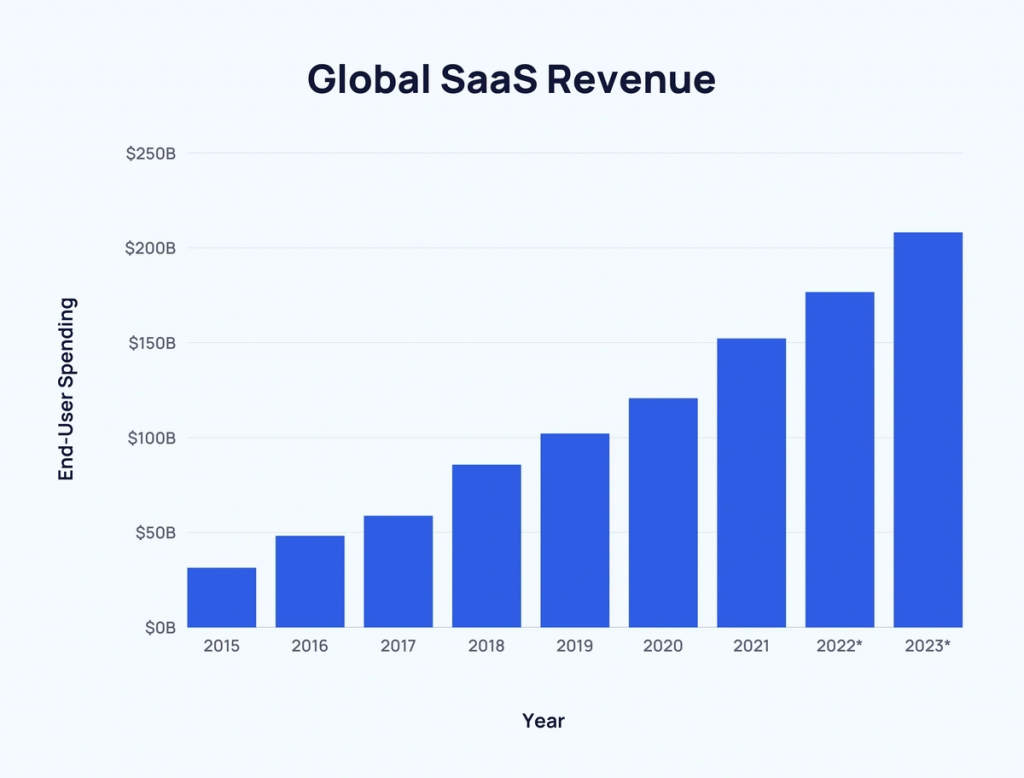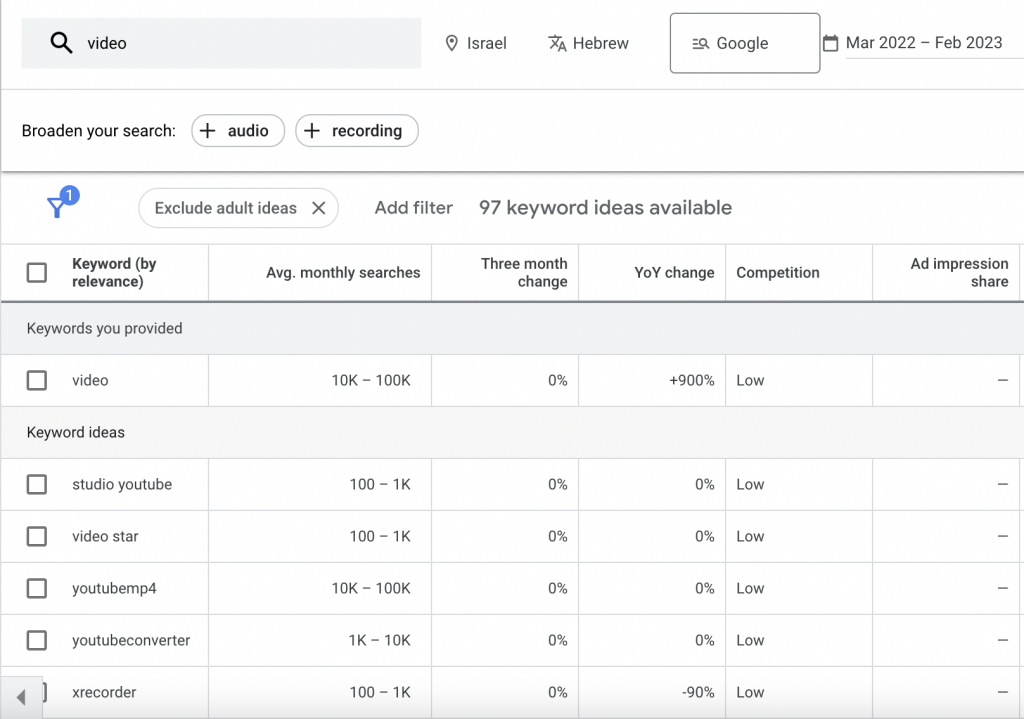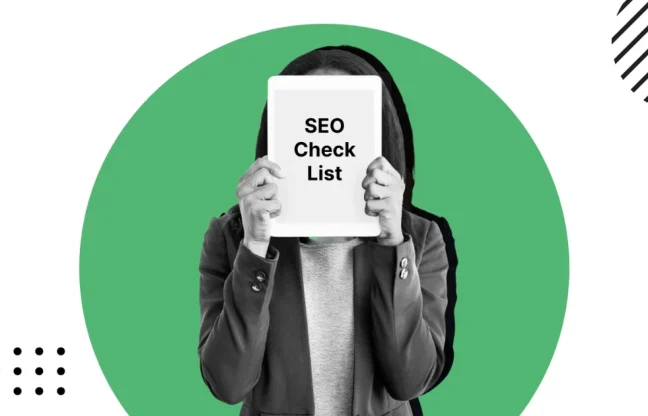SaaS (software as a service) is a fairly popular and growing business model today. This was facilitated by a significant increase in the digitization of society. There are also changes in the behavioral model of companies, including software. New needs have necessitated the use of new services that are present in SaaS.
For a SaaS company, the growing interest in digital services and products can mean both a constant flow of customers and profits and losing the game under the pressure of competition. For your company to be among the winners, you need no luck, but a competent SaaS SEO strategy.
In this article, experts from the NaturalLinks SEO company share with you the specific steps you can take to achieve top search engine rankings. You'll find valuable insights into keyword research, internal and external optimization, content creation, and link building specifically for SaaS companies. So, let's dive in and learn how to do SaaS SEO!
What is SaaS SEO?
SaaS (Software as a Service) is a business model of cooperation, that involves obtaining client access to software through a subscription for a certain period of time. SaaS SEO is the promotion of a company, providing a digital service or product, in a search engine. SEO for SaaS websites helps to popularize the service, gain benefits, outperform competitors, and increase the number of customers.
The main features of SaaS are that it is a highly competitive and dynamically developing industry. This makes it hard to predict what your product will be in a year, five, or ten years from now. That is why, SaaS marketing and online promotion require you to be flexible, entrepreneurial, and ready to rebuild your work strategy and its principles as soon as possible. Moreover, not all SEO tools effective in other industries are suitable for promoting SaaS products. Therefore, we will look at a set of strategies and tools, called SaaS SEO, which are specifically adapted for this niche to work efficiently for it.
Why is SEO for SaaS Important?
The one-word answer is: competition. The two-word answer is cut-throat competition. The latest statistics show that there are about 30,000 SaaS companies worldwide, the lion's share of which (17,000) are located in the US. In 2008, the SaaS market was worth a little over $5 billion, and by 2020, it had grown more than 28 times to $157 billion. And this is not the limit, as people increasingly move digitally and need related services and products. To survive in a competitive environment, it is useless to work on the development of your product if it is not properly promoted on the network under the guidance of a competent SEO for SaaS.
The second reason why SaaS SEO is important for that type of business relates to the mutable nature of SaaS products. Due to the need for dynamic development required by the market and the evolving conditions in the world, SaaS promotion methods must also be flexible and adaptive in order to be able adjusting to changing business needs and goals.
How To Build a SaaS SEO Strategy
There is no one-size-fits-all SaaS SEO strategy, just as there are no two identical SaaS products. Each of them is unique and therefore requires a unique approach to its promotion. Moreover, as already mentioned, the SaaS niche tends to constantly evolve, so the quality of an SEO strategy is largely determined by its ability to adapt to changing realities. However, there is a core of the SEO strategy that works well in most cases to promote modern SaaS products. It consists of five steps:
Step 1: Do SEO Competitor Research in SaaS niche;
Step 2: Do Keyword Research For SaaS Companies;
Step 3: Make a Content Plan for the SaaS Website;
Step 4: Do SEO Optimization of the Website;
Step 5: Do Link Building For SaaS.
Let's go through these 5 steps together and see what they can bring to your SaaS business.
Step 1: Do SEO Competitor Research in the SaaS Niche
SaaS SEO doesn't have to be all about trial and error. Personal experience is great, but! If there is an opportunity to study someone else's achievements and failures, draw the right conclusions, and use ready-made and successfully working solutions, then why not use it? Therefore, any good promotion strategy should start with SEO competitor research, that is, getting to know competitive websites, namely, their structure, backlinks, and content. All this is necessary to know in which direction to move.
What To Look For When You Do SEO Competitor Research
What do the competitors' websites look like? When visiting a competitor's site, the first thing you may notice is the design, usability, and selling elements of the website, including the product range, pricing policy, loyalty program, contact details, service and warranty, etc.
Particular attention should be paid not only to the visual component of the site but also to the source of traffic, that is, the main channel where competitors get customers from. This can be traffic from search results, contextual advertising referrals from social networks, and so on. Also, check the technical optimizations that apply to site parameters such as page load time and mobile compatibility.
What content is posted on your competitors' websites? Content is a key element of a selling site, whether it is a description of the services provided or a product review. The content should be clear and interesting for the user. First of all, it is worth checking the text on the main page and on the pages of categories of goods or services.
Rate the quality of content in the following categories:
- text size and uniqueness;
- stylistics;
- availability of images and videos;
- structuring.
What keywords your competitors are targeting? Researching a competitor's semantic core is a vital component of a successful SaaS SEO strategy. Competitor keyword analysis will help you understand:
- what keywords your competitors rank for;
- which pages rank for these keywords;
- what kind of content is on those pages and how competitive these queries are;
- what you should do to rank for these keywords as well.
A comprehensive analysis of competitors' keywords will give you ideas for refining the semantic core of your resource by adding words and phrases that are popular with users to the content.
What backlinks do your competitors have? Backlinks are important to analyze because they are still considered by search engines when ranking. Understanding how strong your competitors' backlink profiles are will allow you to understand what exactly you need to do and where to get backlinks in order for your website to be considered an authoritative resource. At the same time, you will know which backlinks and domains to avoid so as not to spoil your reputation.
Step 2: Do Keyword Research For SaaS Companies
To create content that your target audience will search for, you need to know what words they will type in a search engine like Google. In addition, you need to know what content Google considers relevant to the keywords you will use. Keyword research can help you get into the minds of your users and search engines. The process of analyzing and collecting semantics consists of researching competitors' keywords, collecting keywords and analyzing them by metrics, clustering semantics, and auditing.
How to Find Keyword Ideas
If you know the SaaS industry, understand the search intent of your potential customers, and know how to use keyword research tools, the process of generating keyword ideas won't be difficult for you.
First, brainstorm the main keywords, these will be the basis for finding many other variations of the keywords. To search for long tail words, use Google autofill suggestions (just start typing your keyword). One of the richest sources of keywords is your competitors. That is why you should get keyword ideas from competitors' websites.
The final prerequisite for generating complete semantics in SaaS keyword research is the use of special SEO tools to create synonymous keywords. They are easy to use and can be paid or free, like Google's Keyword Planner.
Metrics to Analyze Keywords
The next stage of your SaaS keyword research is conclusions, and ranking collected keywords according to the value they carry. This way you can get rid of useless words and focus on the most promising ones. But how to determine which one is better? There are specific keyword metrics for this:
- Search volume: determines how often users use a particular keyword in their searches;
- Keyword Difficulty (KD): helps you estimate how difficult or easy a particular keyword will rank;
- Clicks: reports how many clicks a certain keyword brought;
- Traffic Potential: helps assess the overall search traffic potential for a topic.
- Cost Per Click (CPC): shows how much advertisers are willing to pay for each click on a keyword.
Step 3: Make a Content Plan for the SaaS Website
SEO-optimized and simply high-quality content is one of those elements that bring the target audience to you. It's not just about texts with keywords on the site. Content is everything that conveys important, useful, and relevant information to the user:
- video and audio;
- blog entries;
- images, infographics, etc.
Even animation and emoticons are also elements of content that affect the effectiveness of attracting the target audience and its loyalty. Generating quality content in a systematic way requires a plan. The content plan is a calendar for publishing content, which includes types, volumes, topics, sites, and dates of placement. It is filled out one or two months in advance so that the posts are published regularly.
How to make a content plan for a SaaS niche?
Developing a content plan for SaaS involves systematic work on its compilation. The step-by-step creation of a content plan is carried out approximately as follows:
- Selection of the main query for the page. Most often it will be its title.
- Choice of placement (landing page, blog, category).
- Selection of additional queries on the topic of the article, which will help increase the page relevance.
- Clarification of the essence of the text (a brief description or other materials in the form of videos, images, etc.).
- Determining the release date.
In addition, each article should also have a plan and be structured according to a clearly defined hierarchy (H1 headings, meta tags, meta descriptions, lists, subheadings, etc.).
Where to look for ideas for content in a SaaS niche?
For SaaS developers who are far from writing, it can be hard to come up with ideas for engaging and competitive content. Here are 6 ideas for SaaS content:
- Get content ideas from your competitors.
- Get ideas from your target audience. Draw a map of your audience's needs and how your products can benefit them.
- Create competitor comparison pages.
- Get ideas from your SaaS products and the problems they solve.
- Get ideas from semantics. Find long-tail keywords, which will lead you to a topic where they could be placed.
- If possible, divide your SaaC product into related mini-products that have semantics and are similar in theme to your main product, and get more topics to write about.
Step 4: Do SEO Optimization of Website
A comprehensive SaaS SEO consists of both internal and external optimization. Internal optimization, also called on-page SEO, are optimization techniques that are applied to your SaaS resource. This includes optimizing your content, title tag, meta description, headings, URLs, and everything else on your website for the target keywords. It is essential to do SEO in order to make your website look relevant enough to show up at the top of the search results. Unlike external SEO, which is not very controllable, on-page SEO site optimization is in your hands, so you need to make the most of this advantage.
Technical SEO Optimization Checklist
When checking a SaaS site for technical optimization, there are several important aspects to consider.
Here is a checklist with advice for each item:
- General State of the Site:
- Check if the site is mobile-friendly and responsive.
- Verify that the site is secure with HTTPS.
- Ensure that the site has a clear structure and logical navigation.
- Check for broken links and redirects.
2. Google Core Web Vitals:
- Test the site's speed using Google PageSpeed Insights.
- Use the Google Search Console to evaluate the site's performance and identify issues.
- Monitor the site's Core Web Vitals, including LCP, FID, and CLS.
3. Site Audit and Error Correction:
- Check for duplicate content and ensure that each page has a unique title tag and meta description.
- Optimize images for size and load speed.
- Ensure that the site's code is optimized for search engines.
- Fix broken links and 404 errors.
Some of the most common errors that can have a negative impact on a SaaS site's performance include slow load times, broken links, duplicate content, and poor mobile responsiveness. By addressing these issues and following the checklist outlined above, you can optimize your SaaS site for better performance and user experience.
On-Page SEO Optimization Checklist
Optimizing a SaaS site from an on-page perspective is crucial to increasing its visibility in search engines and attracting organic traffic. After collecting semantics and forming a content plan, here is a checklist with advice for optimizing SEO on-page elements:
Title Tags and Meta Descriptions:
- Ensure that each page has a unique and descriptive title tag and meta description.
- Use relevant keywords in both the title tag and meta description to improve their relevance to search queries.
- Keep title tags under 60 characters and meta descriptions under 155 characters.
Header Tags:
- Use H1 tags for main headings and H2-H6 tags for subheadings.
- Incorporate relevant keywords into header tags to indicate the page's topic and improve relevance to search queries.
Content Optimization:
- Ensure that the content is relevant, informative, and engaging for users.
- Use relevant keywords throughout the content to improve its relevance to search queries.
- Optimize images by adding alt text, compressing their size, and ensuring they are relevant to the page's content.
URL Structure:
- Use descriptive and concise URLs that accurately reflect the page's content.
- Include relevant keywords in the URL, separated by hyphens.
Step 5: Do Link Building For SaaS
To build a good reputation for a SaaS site and bring it to the top, you need to take care of the link profile. This requires a working link-building strategy. There are some ground rules to adhere to so that the websites that refer to your site do not harm it, but bring referral traffic and high rankings. Among these, getting only high-quality backlinks from authoritative and relevant websites, and creating valuable content that other websites won't want to link to. Still, link building for SaaS companies can be a little different from getting links for other industries.
What is special about Link Building For SaaS?
Link building for SaaS companies can be a little tricky as it involves building backlinks for non-physical products or services. SaaS companies usually target a specific market niche, which can make it hard to find relevant and authoritative websites to build backlinks.
However, SaaS companies often have access to a wealth of data and insights that can be used to create compelling content and build authoritative backlinks. In addition, there are some link building strategies that go beyond the typical approach, but will work just fine for a SaaS company. For example, strategic and integration partnerships, during which you negotiate with companies whose products are integrated or can be used with your SaaS products, on mutual referral advertising.
Where to get Backlinks? SaaS Link Building Tips:
Broken-link building
Use specialized tools to scan websites related to your SaaS niche for any broken links. Once you've identified any broken links, reach out to the website owner and offer to replace the broken link with a working one that directs users to your own website.
Forum links
Leveraging community sites such as forums can be an effective way to promote your SaaS brand. By leaving insightful comments and including links to your website, you can attract a targeted audience to your site. While these links may often be nofollow, engaging in relevant discussions within your industry can help you establish authority and showcase your product to potential customers.
Guest Posting
Guest posting is a tried and true method for building links to your SaaS website. Here's how it works: you write an article for a website in your niche, and in return, they post it and allow you to include a link back to your own site.
Internal links
By adding links to relevant pages within your own website, you can improve overall SEO and help visitors navigate your platform more easily. While internal links won't bring in outside visitors, they can increase visitor retention and keep them engaged with your content. Make sure to use descriptive anchor text and include links within the body of your content for the best results.
Blogger Outreach
Outreach is a powerful tactic for building quality backlinks and driving referrals to your SaaS product. By connecting with influencers, bloggers, and public figures in your niche, you can build trust and credibility with their audiences. If a blogger shares how great your SaaS product is with their large following, it can lead to a significant boost in traffic and conversions.
The bottom line
SEO for SaaS Companies can be a challenge. This is due to a fairly narrow specialization, which reduces the volume of search, and with great competition from both small startups and huge corporations. However, with the help of a competent SaaS SEO specialist, any SaaS website has all chances to cut its way through the intense competition, climb up the rankings and improve its organic performance. With the above tips and techniques in mind, you can try optimizing your site yourself. However, by opting for a SaaS SEO campaign led by experienced professionals, you can achieve greater success and avoid mistakes that can damage your website. In addition, SEO for SaaS companies is an ongoing process that includes analytics, regular tracking of results, and a willingness to change strategy in case of a product change.
FAQ - SaaS SEO
Inhouse SaaS SEO vs Outsourcing SaaS SEO: What to choose?
Deciding between inhouse SaaS SEO and outsourcing SaaS SEO ultimately comes down to your specific business needs and resources. Inhouse SEO allows for greater control and customization, but can be more costly and time-consuming. Outsourcing SEO can be more cost-effective and efficient, but may result in less control over the strategy and implementation.
Consider factors such as budget, expertise, and time constraints before making a decision. If you have the resources and expertise inhouse, it may be beneficial to keep SEO efforts internal. However, if you lack the necessary expertise or resources, outsourcing may be a better option.
How much do SaaS SEO Services cost?
SaaS SEO service costs can be unpredictable based on project size and complexity. Ongoing services typically range from a few hundred to a few thousand dollars per month, while one-time projects or audits can cost several hundred to several thousand dollars. At our company, we prioritize transparency in pricing and employ proven strategies tailored to your specific needs. Before establishing costs, we'll take the time to understand your goals and requirements to provide an accurate quote. Contact our team of SaaS SEO specialists for a free consultation and pricing information.
Do Natural Links do SEO for SaaS companies? Any case study examples?
Yes, Natural Links is experienced in SEO for SaaS companies. We have successfully helped businesses like AJAX Systems and Osome achieve significant growth through our comprehensive SEO services. For AJAX Systems, our link building efforts resulted in a doubling of website traffic in the first year, and an impressive five-fold increase over the following two years.
With Osome, we provided complex SEO services that resulted in a staggering 40 times increase in organic traffic to their website, bringing in over 40,000 unique visitors per month. Additionally, we were able to increase their conversion rate from organic visitors from 5.14% to 10.84%, demonstrating our ability to not just drive traffic, but to convert it into tangible results for our clients.
How can I get started with SaaS SEO Services?
Begin your SaaS SEO journey by completing a brief form on the Natural Links website to request a complimentary consultation. Simply enter your contact information and your SaaS website's URL, allowing our specialist to conduct a preliminary evaluation. During the consultation, discuss your website's current status and objectives with one of our SEO experts, and receive personalized recommendations on top-notch SaaS SEO strategies. Alternatively, contact us through email at me@naturallinks.net, Skype at support_70095?chat, or @naturallinks on Telegram to schedule a consultation. Let us help you achieve your SEO goals.
How long does it take to get results with SaaS SEO?
Achieving success with SaaS SEO requires ongoing commitment and patience. While it may take time to see significant results, proper implementation can yield noticeable improvements within 2 to 12 months. Given the competitiveness of the SaaS industry, it takes time for search engines to acknowledge and rank new websites or content. As a website gains credibility and authority in the SaaS sector, rankings and traffic will begin to increase. Ultimately, businesses should consider SEO as a long-term investment but can anticipate some initial results within several months of implementing effective strategies.





